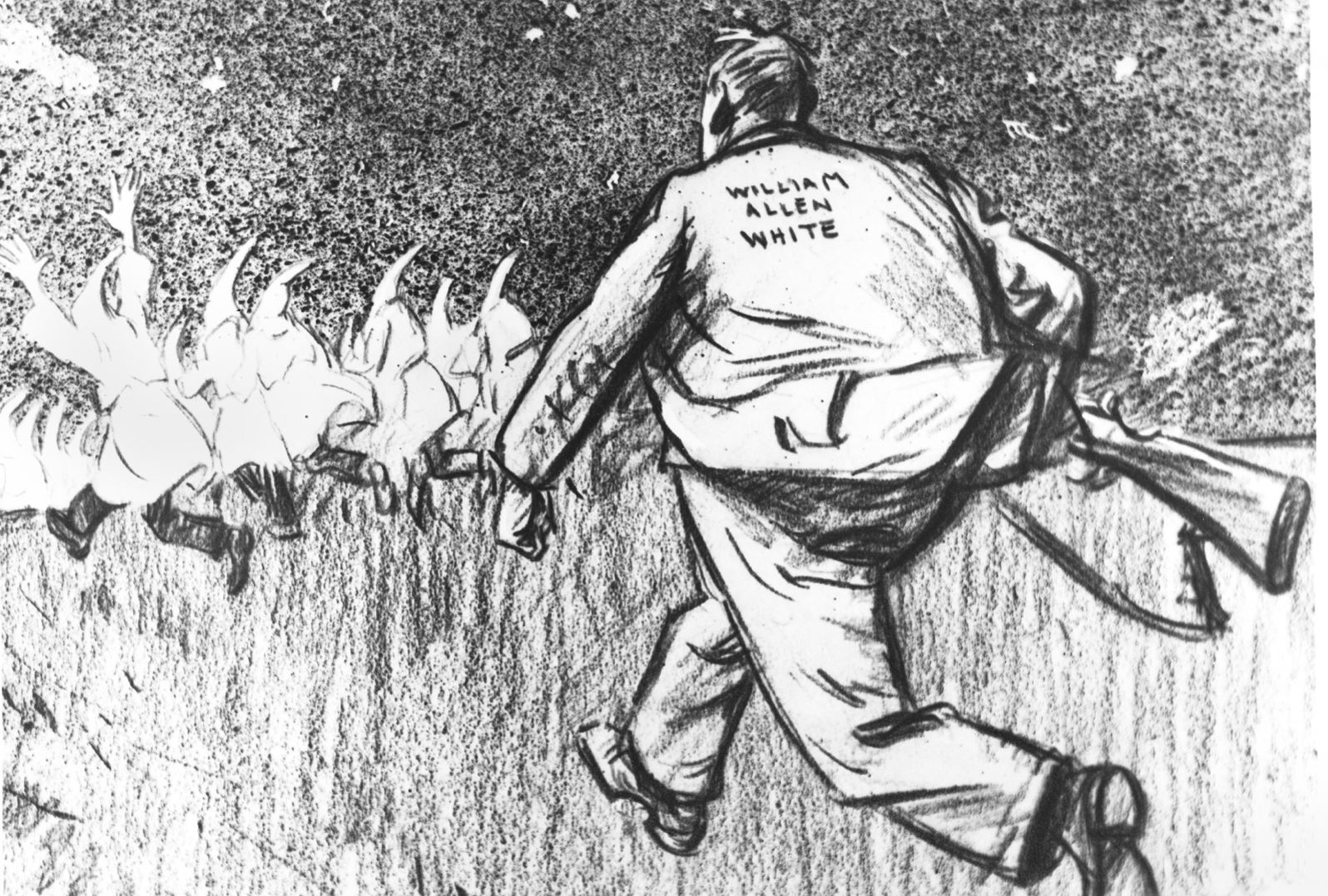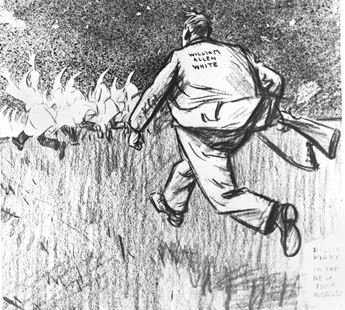

Confronting the Klan
June 20, 2019
By Beverley Olson Buller
An ad in the November 1, 1924, Emporia Gazetteread: “Shall the Ku Klux Klan Name the Next Governor of Kansas?” The 1924 gubernatorial election highlighted this growing menace and gave a loving son of Kansas the chance to rescue his home state from the peril of an organization that would limit the freedom of its citizens.
William Allen White, the Emporia newspaper editor and life-long Kansan who promised in 1897 he would seek no political office, chose to join the race, not to win, but to save his state from Klan control.
Racial tolerance bloomed early in William Allen White and spread to his children. Of his mother, Mary Hatten White, he wrote in his autobiography, “She gave her heart and soul to the abolition movement.” When Mary Hatten became a school teacher in Council Grove, Kansas, in the mid-1860’s, she welcomed all children as her students much to the consternation of many of the town’s residents.
In 1924, William Allen White had resided at the edge of Emporia’s black community for 25 years, and members of that community regularly visited with White on his porch as he relaxed in his hammock. White’s son, William Lindsay, remembered walking to elementary school with black children from time to time, and White’s daughter, Mary, petitioned Emporia High for a lounge for her black female classmates.
With this history, White noted with concern the rise of the Ku Klux Klan in Kansas, beginning in 1921, assailing the group in letters and public editorials as foolish and cowardly but also, in a phrase he used often, as “social dynamite.”
Henry Allen, White’s friend and governor from January 1919 to January 1923, battled the Klan in his second term with speeches and proclamations, including one that masks not be worn in public. With increasing outrage, White watched the Klan take hold in his beloved Emporia and, when the 1924 gubernatorial primaries produced two candidates with Klan ties, he began to tap like-minded friends to run on the Independent platform. Without success and with the encouragement of Henry Allen, White announced his own candidacy on September 20, 1924, with a clear platform: “I want to offer Kansans afraid of the Klan and ashamed of that disgrace, a candidate who shares their fear and shame.”
The world watched through its newspapers as the 56-year-old newspaper editor traveled 2,783 miles and made 104 speeches, all directed at the Klan. On election night, he let it be known he’d be going to bed early and awoke the next morning to find he’d come in third in the race.
However, the Republican candidates he’d endorsed for office narrowly won, so the anti-Klan sentiment continued, and work began on denying them the right to assemble in Kansas since they did not have a charter.
When the state supreme court ruled in 1927 that the Ku Klux Klan could not legally operate in Kansas, it was the first such ruling in the nation, supporting White’s supposition, “When anything is going to happen in this country, it happens first in Kansas.” (April 25, 1922)
The story of Kansas may well have taken a different turn without the willingness of a small-town editor to set aside the pleasant ways of his life to doggedly pursue the “…hooded gang of masked fanatics…” (September 20, 1924) threatening the well-being of his state.
To join the Movement of Ideas and learn more about White’s advocacy against the Klan book Beverley Olson Buller’s speaker’s bureau talk, “William Allen White and the KKK in Kansas: “A Real American Goes Hunting.”





